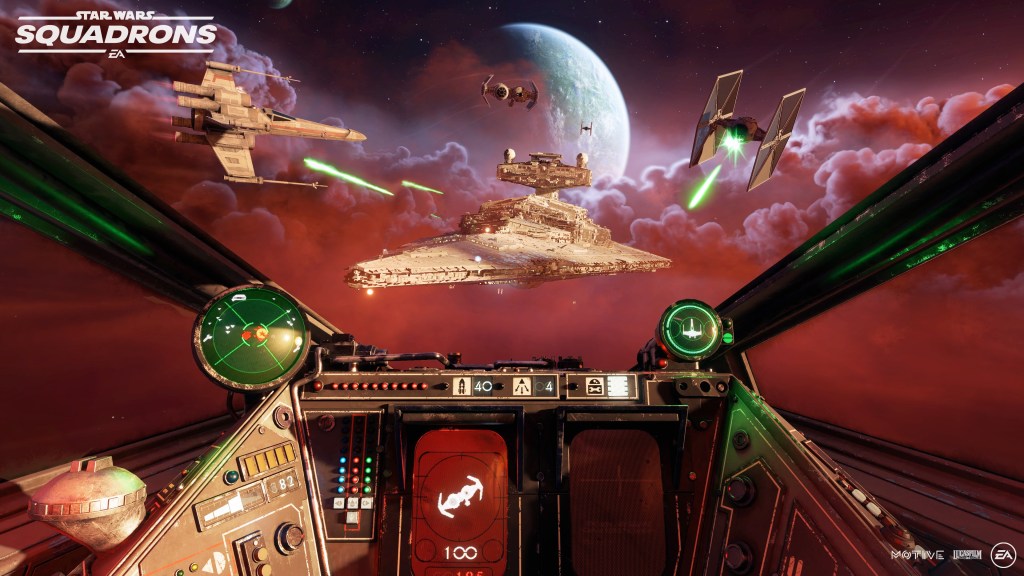As our spaceship swung somewhere past Mars, I frantically flicked switches and slammed buttons to keep control of the onboard nuclear reactor, to prevent a power blackout in the cabin, and to keep alien intruders out.
The screen in front of me flashed and beeped, asking for the code that would bring me and my team back to safety as the whole ship shook around us. I flipped through the vehicle’s manual and typed in what I thought was the relevant sequence. The door behind me opened and a red tentacle shot out. “You Are Dead,” the screen read.
Videos by VICE
While virtual reality games are often called “immersive,” this experience showed that the most captivating experiences don’t have to involve wearing goggles. I was inside the LHS Bikeshed spaceship simulator, a DIY, sci-fi styled caravan that takes immersive gaming to the next level.
Unlike VR, the game delivers its real kicks through off-screen elements. When the ship shakes, the whole caravan actually physically shakes. When you have to plug in an emergency cable to save the ship, you have to actually, physically get up and plug the right cable into the right port. It’s not virtual reality, it’s real-life reality—and that’s what made it the best space simulator I’ve ever set foot in.

The caravan at EMF
I first spotted the Bikeshed at the Electromagnetic Field Festival last month, and headed over to London Hackspace, its usual home, to try it out this week.
The simulator is housed in an old caravan, painted black and decorated with hazard tape. Inside are three seats—for a pilot, engineer, and tactical officer—next to stations of computer monitors, joysticks, and all kinds of button arrays. Pretty much anything that looks like it might do something does.
The game was created by hackspace regulars Tom Wyatt, Tim Reynolds and Charles Yarnold, who explained that they first built it a year or so again but are continually adding more elements. “We didn’t really have much of a plan other than, ‘Let’s build a spaceship,’” said Wyatt, as Yarnold recalled how he’d picked up the battered old caravan from a destruction derby.

The cockpit, with Tom Wyatt as pilot, left
In the caravan, a big screen at the front shows the view from the ship as it flies past stars and (hopefully) dodges debris to get to docking points along the mission. The pilot controls the ship with a joystick, a bunch of switches, and has a radar screen that Wyatt admitted was pretty much ripped off from the 80s video game classic Elite.
The tactical officer starts the mission by calling air control—played by Yarnold, who appeared on another screen in the cockpit—and generally keeps everything going. A large button marked “Hyperspace Jump” needed thumping whenever it flashed red.

The engineer’s station
I played the role of engineer, which involved a watching a whole series of switches that needed to be flicked according to things flashing warning signs on the screen above them, an emergency repair kit, and a manual for the ship containing a bunch of codes.
We were going fine—we met several checkpoints, and I avoided a meltdown at one point—until I needed one of those number sequences. I lined up my code-reader and punched in the numbers that showed through the holes—only to find that, rather sneakily, the manual required the reader to be placed upside down in this case. In my panic, I hadn’t noticed that I’d incorrectly lined up A with B and B with A, which had given me the wrong result. Game over.
The success of the game is this kind of twist; you never know whether you’re going to have to do something onscreen, focus on some small print, or jump out of your seat and plug a cable from one socket to another (that’s what was in the repair kit).

Charles Yarnold in the “airlock”
The experience is hacked together with whatever the guys dream up to add. There’s a laser-cut seatbelt sign, a smoke machine that belts out fog when you hit damage, and the whole thing is live-streamed by cameras at each work station.
The whole thing is run by another player who’s hidden in the back room of the cabin—the “air lock.” Here, Yarnold controlled the game via two Android tablets. Almost every aspect of the script can be changed, and when I had a go in the pilot’s seat, he made the landing semi-automated for me, because I really suck at using joystick controls. “Unless I actually push the ‘kill ship’ button, you can win even if I’m being really mean,” he said.
You don’t really need his help to die though, because the game is difficult enough as is. As per its description on Twitter: “A spaceship simulator in a caravan. Everyone dies.”
In contrast to the biggest thrills of virtual reality games, the most captivating bits of this one are perhaps the least high-tech. When the whole caravan shook—something I took to be a very clever piece of hydraulic action—it was actually Yarnold jumping up and down. The big “alien invader” reveal was also him, jumping out with an inflatable red tentacle.
Next, the team are looking for funding to expand the game with another, larger space—a space station—that would offer an experience along the lines of Secret Cinema events. “We’d have an entire space station and the caravan, and then you can go off on a mission into space,” said Yarnold. “We want like a stasis chamber where someone’s frozen,” added Wyatt.
It’s a work in progress, and they promised me the game wouldn’t be the same even the next day. “This will be different tomorrow,” said Reynolds, noting that Wednesday is “work on the van day.” The caravan’s interior is constantly evolving, Wyatt said—”Mostly along the lines of ‘Wouldn’t it be cool if…?’”
Based on what I saw so far: Yes. It would be cool.



